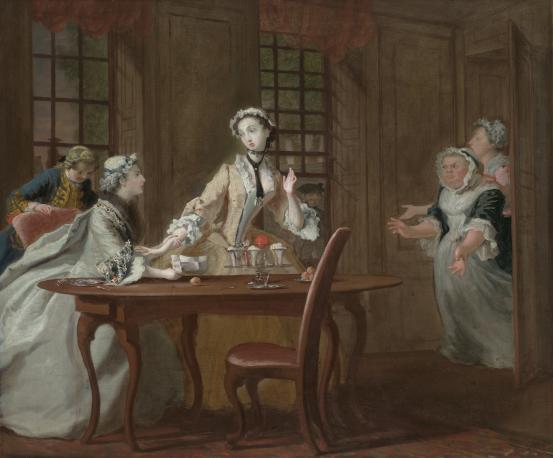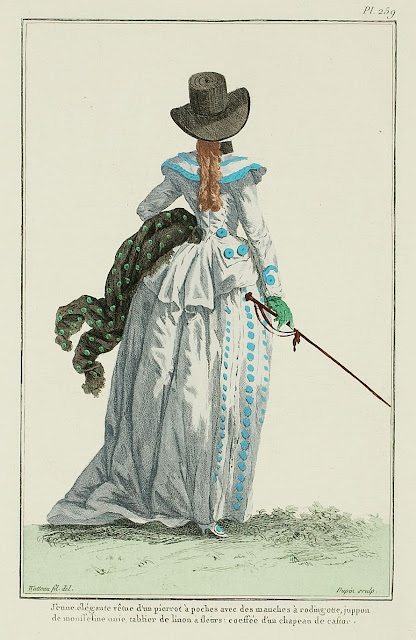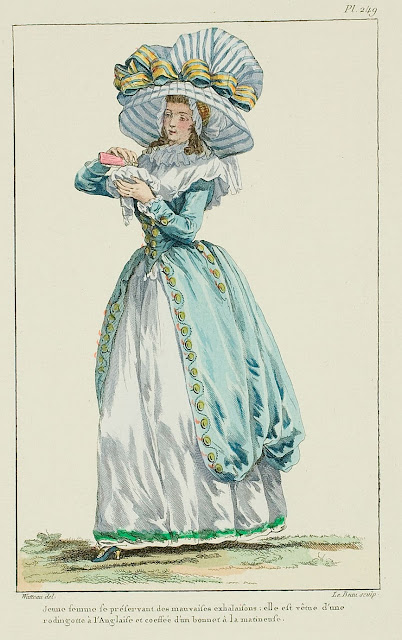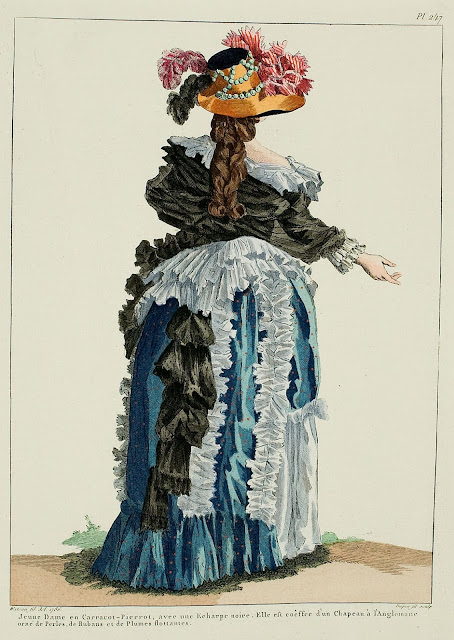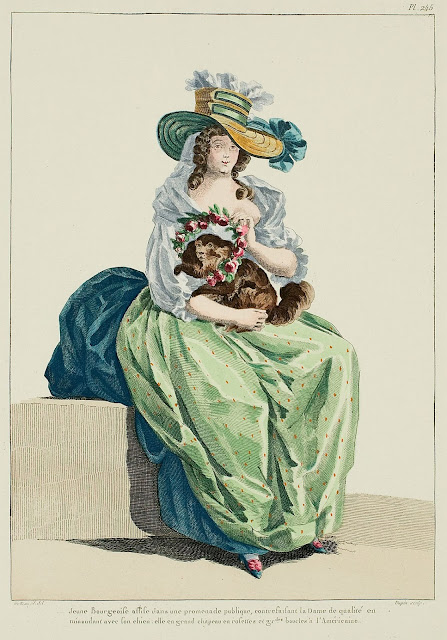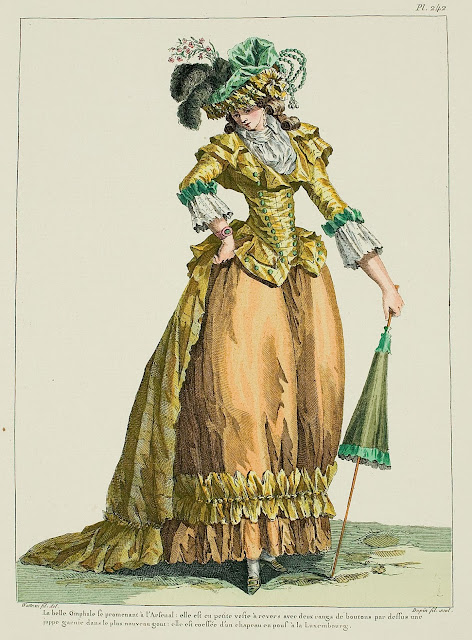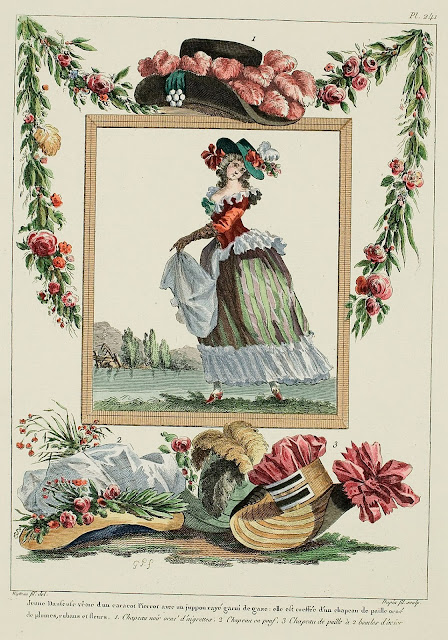Galerie des Modes, 55e Cahier, 2e Figure

1. Striped morning coat etc. 2. Round hat trimmed with gances. 3. Jockey hat trimmed with tassels, cockade, and jay, etc. 4. Soft boots à l'Anglaise. 5. Officer Hat. 6. Round hat. (1787) A "Society of Pedestrians" asks in the Journal de Paris of January 24, 1785, if shoes exist that are "impenetrable, which protect white stockings in all their brilliance and which one can take off and put on alone and promptly in an antechamber". On February 11, 1785, an inhabitant of Evreux responds that this shoe has existed in Evreux for several years, where it was brought from Arras by an officer. "These boots are made of goat leather or thin calf, lined with white linen. They are rather wide so that the shod foot can be put in easily (one takes the measure over the shoe, rather than without it), three or four whalebones support the shaft and prevent it from wrinkling; further, one attaches a ribbon or braid which is passed from a button to the garter of
